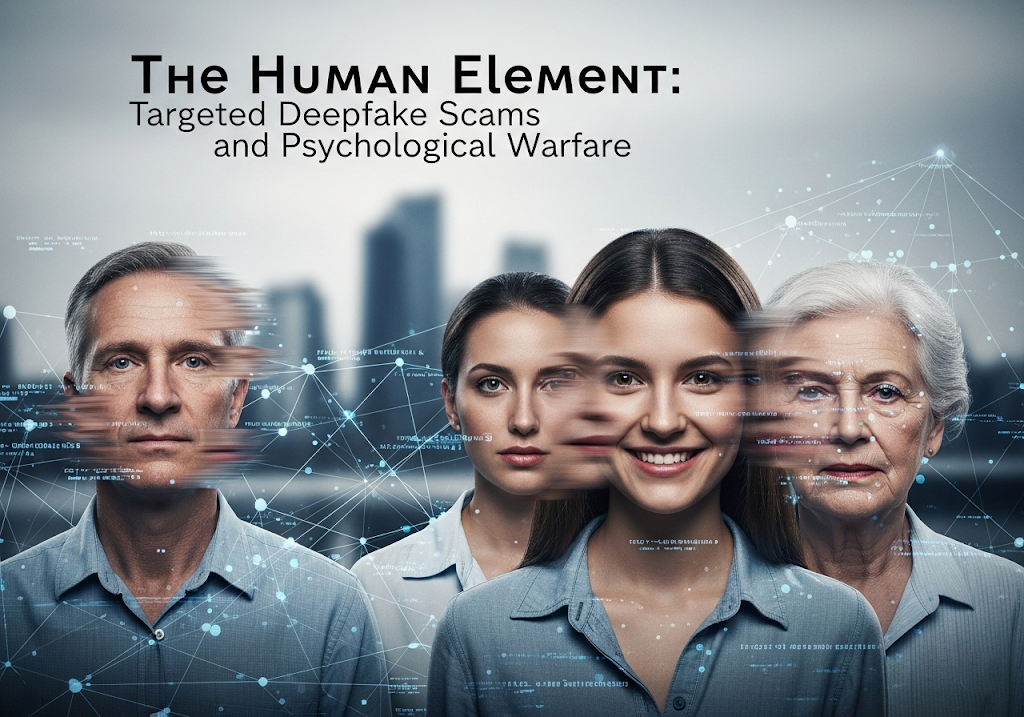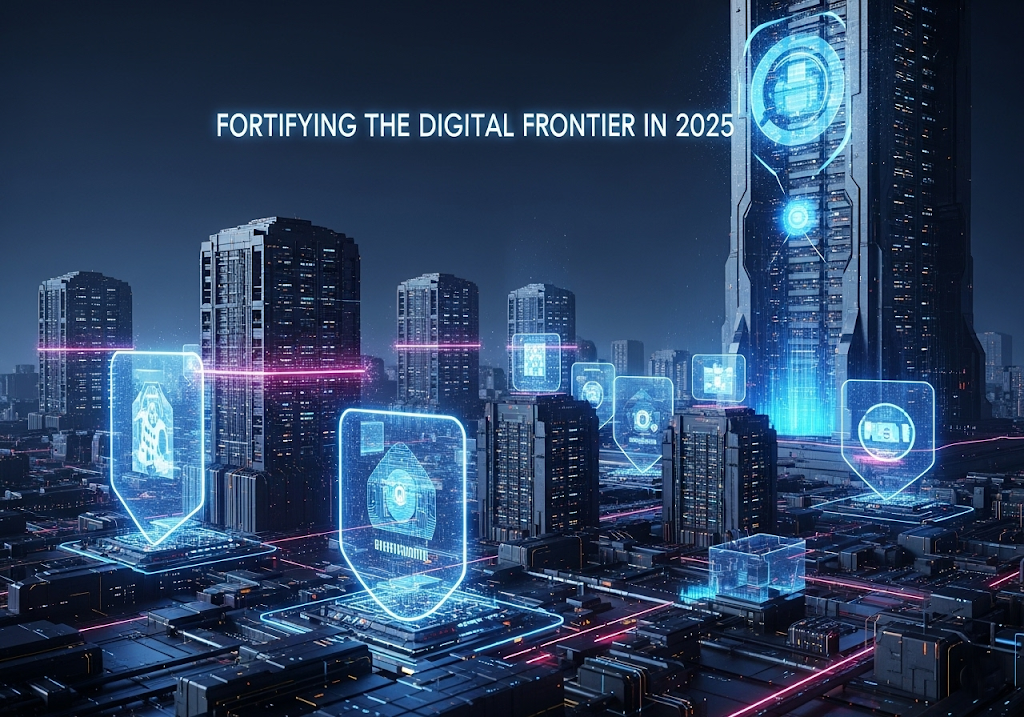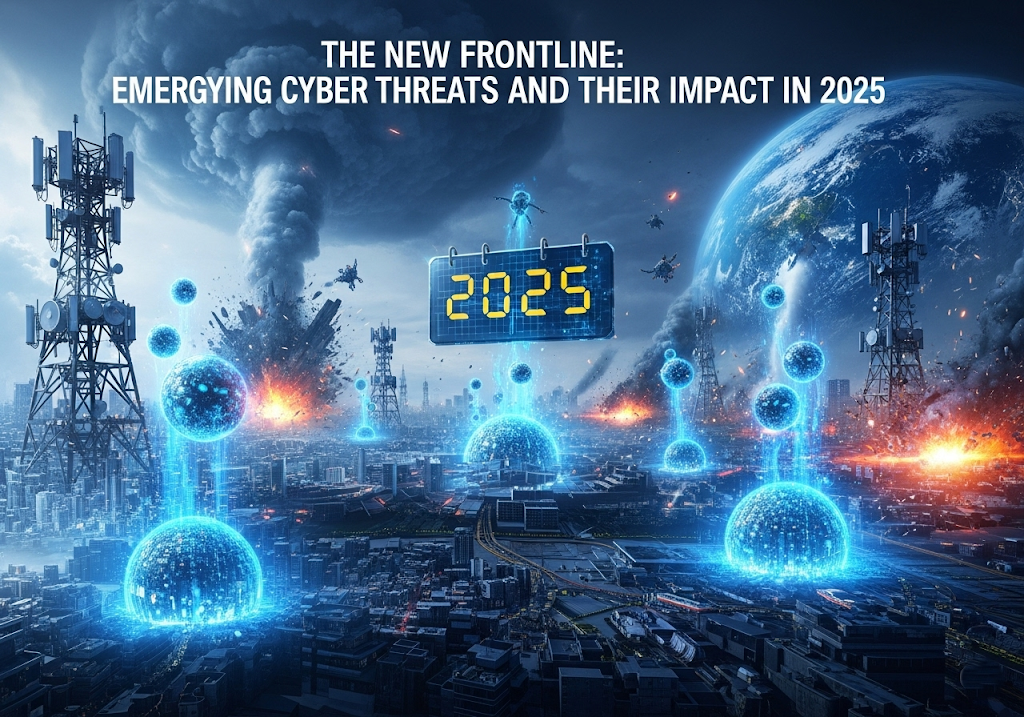The New Frontline: Emerging Cyber Threats and Their Impact in 2025
The digital realm in 2025 represents an increasingly complex and hazardous environment, with cyber threats pushing the boundaries of traditional security models. As technology advances and global interconnectivity deepens, so too do the opportunities for malicious actors. We are witnessing not just an increase in attack volume, but a qualitative shift in methodologies, driven by sophisticated tooling and evolving geopolitical agendas. Understanding these emerging threats and their potential impact is paramount for anyone navigating the modern digital landscape.
The Rise of Quantum-Resistant Cryptography Attacks (QRCAs) Foreshadowing

While full-scale quantum computing is still a few years away, the specter of Quantum-Resistant Cryptography Attacks (QRCAs) is already influencing the threat landscape in 2025. Malicious actors, particularly state-sponsored groups, are engaging in “harvest now, decrypt later” strategies.
Data Hoarding for Future Decryption: Adversaries are actively collecting vast amounts of encrypted data today, anticipating that future quantum computers will be able to break current encryption standards (like RSA and ECC). This means that highly sensitive, long-lived data, such as government secrets, intellectual property, or personal health records, could be vulnerable down the line. Organizations handling such data need to begin the transition to quantum-safe algorithms.
Preemptive Attacks on QRC Systems: As organizations slowly implement early quantum-resistant cryptographic systems, attackers will seek to exploit any misconfigurations or vulnerabilities in these nascent implementations. The complexity of new cryptographic standards introduces new potential attack surfaces that human error or oversight could expose.
Supply Chain Attacks: The Exploding Multiplier Effect
Supply chain attacks have become a dominant and devastating trend in 2025, moving far beyond mere software updates. Attackers are recognizing the immense multiplier effect of compromising a single trusted vendor, gaining access to hundreds or thousands of downstream customers.
Software and Hardware Infiltration: This includes tampering with legitimate software updates, injecting malicious code into open-source libraries, or even compromising hardware components during manufacturing. The impact of such attacks is catastrophic, as seen with previous major incidents, leading to widespread breaches before the compromise is even detected.
Managed Service Providers (MSPs) as Gateways: MSPs, trusted with managing IT infrastructure for numerous clients, are increasingly targeted. A successful attack on an MSP can grant adversaries access to the networks of all their clients, creating a single point of failure with massive ramifications.
Cloud Supply Chain Risks: As more organizations migrate to cloud services, vulnerabilities within cloud providers’ ecosystems, or weaknesses in third-party integrations with cloud platforms, become critical supply chain risks. Misconfigurations or exploited weaknesses in cloud-native applications can expose vast amounts of sensitive data.
The Human Element: Targeted Deepfake Scams and Psychological Warfare

Despite technological advancements in defense, the human element remains the most vulnerable entry point. In 2025, attackers are weaponizing psychological tactics with unprecedented precision, driven by AI and data analytics.
Sophisticated Deepfake Scams: Voice and video deepfakes are now highly convincing. Attackers are using them for “CEO fraud,” where a deepfake voice or video call of an executive orders an urgent financial transfer, or for blackmail, by fabricating compromising videos. These are virtually indistinguishable from real interactions, bypassing traditional multi-factor authentication (MFA) methods that rely solely on knowledge-based factors.
Behavioral Manipulation via Data Analytics: Malicious actors are increasingly using advanced data analytics to build comprehensive profiles of individuals and organizations. This allows them to identify psychological triggers, routines, and vulnerabilities, enabling them to craft highly effective and personalized social engineering campaigns that exploit trust, urgency, or fear.
Employee-Turned-Insider Threats (Unwittingly or Otherwise): Beyond external attacks, disgruntled or financially motivated employees pose a significant risk. However, in 2025, attackers are increasingly using sophisticated psychological tactics to manipulate unsuspecting employees into becoming unwitting insiders, unknowingly providing access or data.
Critical Infrastructure as the New Battleground
The targeting of critical infrastructure (CI) is no longer solely the domain of nation-states; it’s becoming a more accessible target for sophisticated criminal enterprises and hacktivist groups in 2025, driven by the increasing digitalization of operational technology (OT) systems.
Convergence of IT and OT: The convergence of Information Technology (IT) and Operational Technology (OT) networks in sectors like energy, manufacturing, and transportation introduces new vulnerabilities. A cyberattack on an IT system can now cascade into the physical world, disrupting industrial processes, causing power outages, or even leading to physical damage and safety risks.
Ransomware on Industrial Systems: Ransomware groups are increasingly targeting OT environments, understanding the immense pressure on these organizations to restore operations quickly. The potential for catastrophic real-world consequences gives attackers significant leverage for large ransom demands.
GPS Spoofing and Satellite Network Attacks: With increasing reliance on satellite navigation (GPS) for everything from logistics to military operations, the potential for sophisticated GPS spoofing or direct attacks on satellite communication networks represents a severe, emerging threat with broad impact potential.
Fortifying the Digital Frontier in 2025
To combat these evolving threats, a proactive and adaptive defense strategy is critical.
Zero-Trust Evolution: Implement a dynamic Zero-Trust model that continuously authenticates and authorizes every access request, whether from a user, device, or application, based on real-time risk assessment.
Advanced Threat Intelligence: Invest in robust threat intelligence platforms that provide real-time, actionable insights into emerging attack methodologies, hacker groups, and geopolitical cyber trends.
Cyber Resilience and Redundancy: Focus on building cyber resilience, not just prevention. This means having robust backup and recovery systems, redundant infrastructure, and tested incident response plans to ensure business continuity even after a successful attack.
Quantum Readiness: For organizations handling long-lived sensitive data, begin evaluating and planning the migration to post-quantum cryptography (PQC) algorithms.
Human-Centric Security: Beyond technical controls, invest heavily in security awareness training that addresses advanced social engineering, deepfake recognition, and the psychological tactics used by attackers. Foster a culture of skepticism and vigilance.
Unified IT/OT Security: Implement integrated security solutions that provide visibility and protection across both IT and OT environments, bridging the traditional divide to protect critical infrastructure.
The year 2025 presents formidable cyber challenges. By understanding the nature of these emerging threats and committing to advanced, adaptive security measures, organizations and individuals can build the resilience needed to navigate this new digital frontline. Preparedness is no longer an option; it’s a necessity




